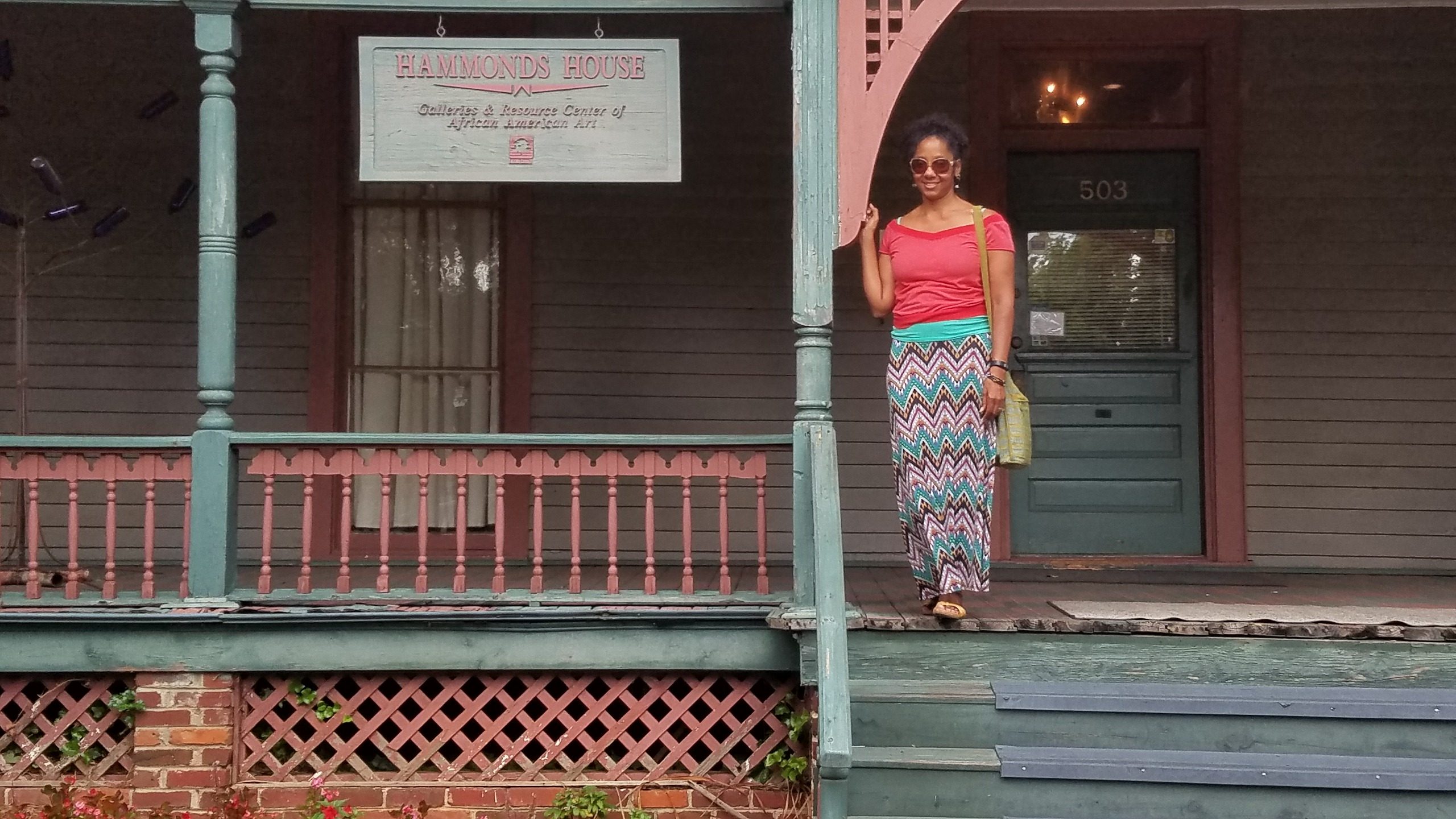Hammonds House Museum
Atlanta, Georgia ($5)
August 11, 2016
The Hammonds House Museum is a 19th Century two story Victorian home that was once owned by physician and art collector, Dr. Otis Thrash Hammonds. The Fulton County Board of Commissioners acquired the house and Dr. Hammonds’s art collection in 1986.
When my dad and I visited, on display were two exhibitions: To Pass Through and Be Gone, which consisted of works from the collection of William Arnett, which included the self-taught artists, Thornton Dial, Thornton Dial, Jr., Richard Dial, Lonnie Holley, Ronald Lockett, Charles Lucus, and Joe Minter, mostly found object sculptures and Ealy Mays and Image Perceptions From the Collections of Kerry and C. Betty Davis, Greg Richardson, Larry and Brenda Thompson.
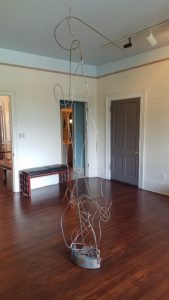
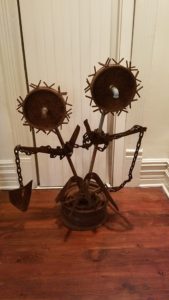 The found metal sculptures were my favorite. My dad and I debated the merit of these abstract works. He wrinkled his nose, and I shared, with pride, that visiting so many museums had really increased my appreciation for abstract art. We discussed Lonnie Holley’s metal and wire sculpture, “Looking Like a Bird,” and I pointed out the head and beak. He also explained to me that Joe Minter’s piece, “Drive Shaft” is actually made with something called a drive shaft.
The found metal sculptures were my favorite. My dad and I debated the merit of these abstract works. He wrinkled his nose, and I shared, with pride, that visiting so many museums had really increased my appreciation for abstract art. We discussed Lonnie Holley’s metal and wire sculpture, “Looking Like a Bird,” and I pointed out the head and beak. He also explained to me that Joe Minter’s piece, “Drive Shaft” is actually made with something called a drive shaft.
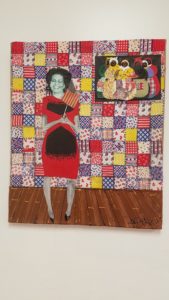 The museum staff members we met both urged us to be sure to see the Ealy Mays exhibit with its provocative works. We went room to room in the big old house until we finally found the exhibit in a back room on the ground floor. The most provocative paintings and mixed media pieces touched on issues like police violence and stereotypes of Black women.
The museum staff members we met both urged us to be sure to see the Ealy Mays exhibit with its provocative works. We went room to room in the big old house until we finally found the exhibit in a back room on the ground floor. The most provocative paintings and mixed media pieces touched on issues like police violence and stereotypes of Black women. 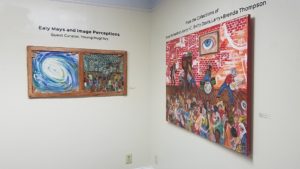 The one that stood out most to me was an ironic, hopeful piece called, “No More Mammies in the White House Now” featuring a photo of Michelle Obama’s face wearing a content expression superimposed on a painting of her body holding an American flag with a quilt and a framed painting of six faceless, stereotypical Black “Mammies” in the background. This piece compliments Mays’s ongoing Mammy series and suggests that Mrs. Obama, while honoring her ancestors and the legacy of Black women’s primary occupation in this country being domestic work, her presence in the white house is a powerful symbol challenging lingering stereotypes of African-American women.
The one that stood out most to me was an ironic, hopeful piece called, “No More Mammies in the White House Now” featuring a photo of Michelle Obama’s face wearing a content expression superimposed on a painting of her body holding an American flag with a quilt and a framed painting of six faceless, stereotypical Black “Mammies” in the background. This piece compliments Mays’s ongoing Mammy series and suggests that Mrs. Obama, while honoring her ancestors and the legacy of Black women’s primary occupation in this country being domestic work, her presence in the white house is a powerful symbol challenging lingering stereotypes of African-American women.
Check back to read about my visit to the Tuskegee Airmen National Historic Site, Moton Field.
